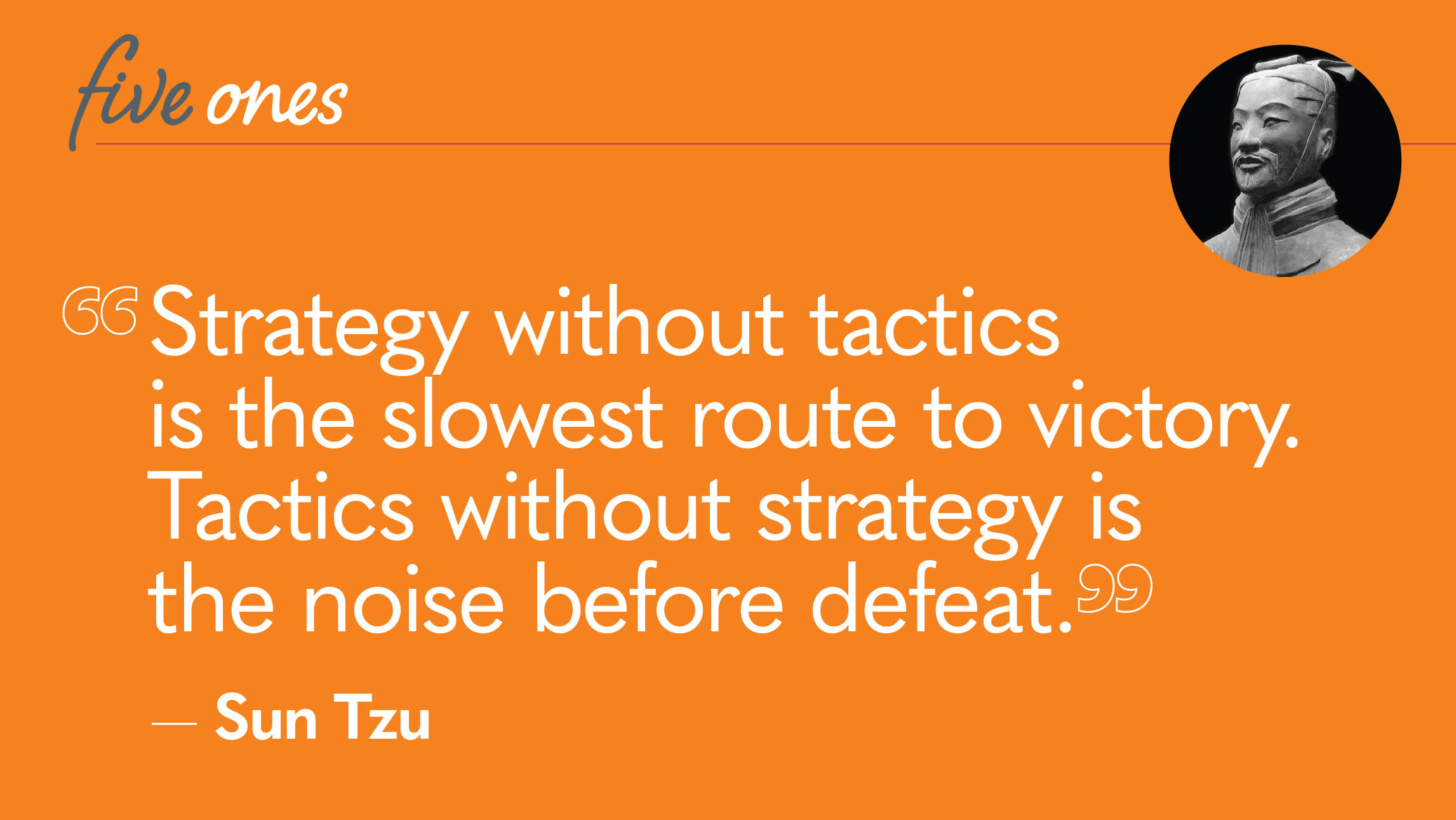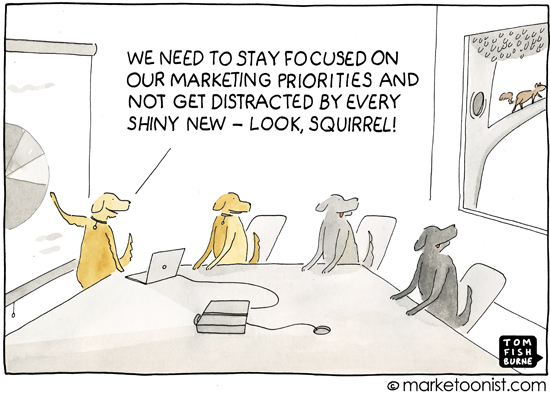
Marketing Plans with a Strategic Focus
A solid marketing strategy is the bedrock of an air-tight marketing plan. (Isn’t that an understatement? Just stop and re-read that for a second and let it sink in.) Clearly translating your vision into concrete plans is important for many reasons:
- It will help you be more realistic about things like budget sizes and what you can actually achieve.
- It will keep marketing on track and not putting what you really need to do on the back burner while chasing something intangible. (You know, being proactive vs. reactive.)

- It provides a roadmap for everything you and your team need to accomplish and will help you achieve your goals.
Are you ready to chart your course for the future? Do you want to make the biggest impact and attract donors? (I hear your head nodding. I don’t think you’d be reading this if you weren’t.) So, it is worth the time and investment in creating a strategic marketing plan that aligns your organization’s goals with your efforts and adequately sums up how you will achieve them.
To start off, writing out the details of what you are after will solidify your objectives, which is a very important part of getting the ball rolling. (If you need help rolling that ball uphill, check out our Marketing Plan Workbook, a handy guide that will walk you through creating your plan!) A good strategic plan will first, and most importantly, garner support from the people around you – your team, your colleagues, your management team. Sometimes internal buy-in can seem harder than anything else. But don’t underestimate the power of other departments feeling like you’ve heard them and are ready to support them through marketing.
These are the main sections of a strategic plan:
- mission statement
- a summary of goals, intentions, and activities
- analysis: industry and direct competitors
- positioning
- audience
- strategy and tactics
- measures of success (KPIs)
- budget
- timeline
Let us look at the first six of these more closely. But first…
Evaluate your resources
This refers to not just the money you have placed in your budget (or think you’ll be approved for) or expect from fundraising, but all the other resources available to you. These include your skill and experience, and that of your team and the people/volunteers who are a part of your marketing efforts. This step is critical to being acutely aware of the amount of hard cost you can commit to and the manpower available to you so you don’t have unrealistic expectations (ideas vs. reality).
Connect your marketing strategy to your mission statement
What is your nonprofit or association’s mission statement? This may be something you’re not thinking about every day (because you’re busy doing) but should be the guiding light of your marketing efforts. Reiterating how marketing supports your mission is the cornerstone of your marketing plan. This is also very helpful for board members to see and rationalize.
Sketch out your ambitions, goals, and activities (otherwise known as objectives)
Drafting out your exact desired endstate at the end of a period or year, and the various ways you can achieve them will help to break down your primary vision into discrete parts that can be planned precisely. When you do this properly, you will be able to see your objectives in detail and carry that directly to creating campaigns.
For example, if your endstate is that you want to be “nationally recognized and positioned as an innovative leader” or “increasing education, income, and health – especially for women and kids” then every objective should tie back into that goal.
Your objectives will then be very specific, such as:
- Increase brand awareness
- Increase market share and revenue
- Increase customer engagement
Remember, keep your objectives broad. You’ll get granular later.
Analysis and positioning
After identifying your main goals, it is time to consider some strategic thinking. You are still thinking high-level here though. One helpful tool you can use for input in this section is a very common method called a SWOT analysis. (You probably got a lot of practice at this in school, but it is very useful in business, too.) This stands for:
- Strengths
- Weaknesses
- Opportunities
- Threats
The first two are positive and negative elements within your organization while the latter are positive and negative elements outside of your organization. The main idea is to go over them with your team and think about ways to maximize the positives and minimize the negatives. Pair this with an analysis of your overall space and your direct and indirect competitors, and you can create the right way to position your nonprofit or association’s message.
Audience
Who exactly are your potential stakeholders – future employees, donors, and even the people you serve? You’ll need to put together a picture of who they are (age, race, familial status, etc.), what they like (hobbies, professional affiliations, etc) and their attitudes (preferences, beliefs, buying or media habits, etc.) in order to make sure that your strategies and tactics are reaching the right people. Conducting research to create personas is the most effective way to do this, but if that’s not a possibility, sometimes gathering an internal group and creating the personas based on your knowledge and expertise is enough to put something together.
Marketing Strategies & Tactics
You’ve finally reached the “meat” of the market plan – how exactly are you going to catch the attention of potential donors and volunteers? With so many organizations competing for this same attention, marketing is one of the most important ways to stand out from the crowd.
Start with strategy statements first that fit your objectives and then you can organize your tactical ideas (usually the easiest part) underneath. I suggest three to ten strategies, at least two for each objective. Start each statement with a verb, such as: create, educate, encourage, leverage, develop, utilize, or continue.
Then, you move to tactics. Below are a few channels that I bet you’ll want to use.
Website: The internet has made online marketing and advertising much easier than it used to be. Creating and maintaining a website should definitely be one of your first moves. (I know this is sometimes easier said than done, especially if you’re at a small nonprofit.) This is the best place to draw people in, captivate them and get them to invest in your cause. Create content that speaks directly to the motivations of the average volunteer, update available info about upcoming events and provide feedback from successfully executed projects.
Email: Carefully targeted email can be used to build awareness, keep volunteers and donors feeling involved and send regular reminders of impending events or milestones. A people-based approach, or segmentation, can be really effective through email, as its personalized. Thinking about the different audiences and what they would be most interested in is a great place to start. As you get more knowledgeable, you can set up more complex email drips or triggered emails.
Advertising: Sometimes using traditional advertising methods can be most effective in reaching the most people at once. Most nonprofits can utilize earned media, like PSAs or PR, without paying for the placement. But, if you want to ensure you get an urgent message out, paying for some placements may be a smart and strategic move. A lot of nonprofits can dip their toe into paid media on social media first, where you only need a budget of $50 to get some movement.
Guerrilla: Use non-traditional forms of outreach to activate your audiences in person in places where you think they might be and create awareness through word-of-mouth. One great way to start guerilla (or experiential marketing) is to enable teams with matching t-shirts and small giveaways and flyers during a community street festival.
Social Media: Currently one of the most powerful mediums for sharing information and connecting, the power of social media platforms like Twitter, Facebook and Instagram is inestimable. You can create buzz about your events by sharing viral and event-specific content, while using various incentives to encouraging sharing, and build a digital community that will want to meet in person to deepen their engagement.
Looking for more tactical ideas? Check out our mega checklist of tactics here.
Starting the process and then solidifying your marketing plan can take time, but it pays off hugely in the end. If done well, your strategic plans will engage and attract stakeholders who will be willing to rally around your cause.


